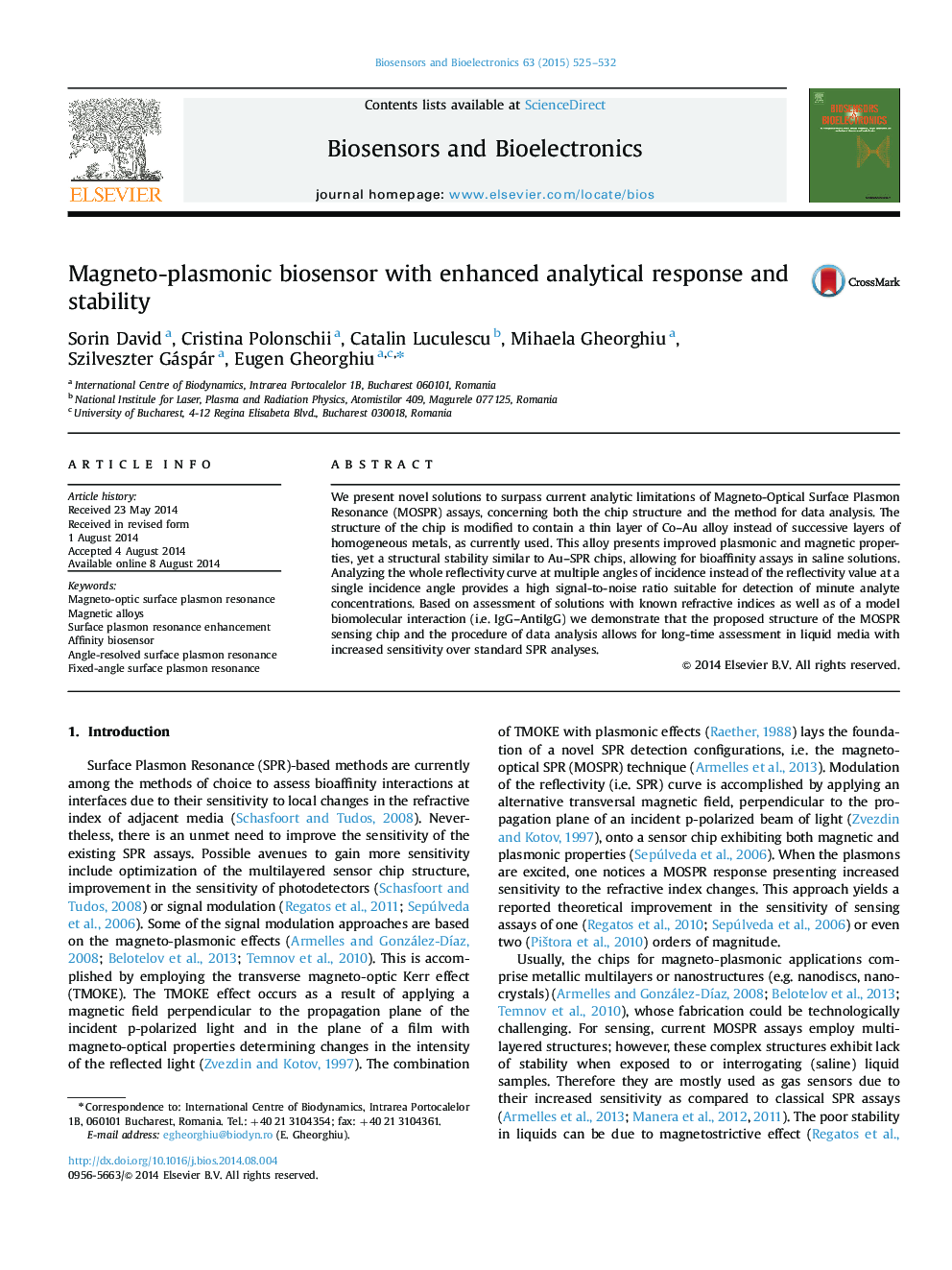| Article ID | Journal | Published Year | Pages | File Type |
|---|---|---|---|---|
| 7233325 | Biosensors and Bioelectronics | 2015 | 8 Pages |
Abstract
We present novel solutions to surpass current analytic limitations of Magneto-Optical Surface Plasmon Resonance (MOSPR) assays, concerning both the chip structure and the method for data analysis. The structure of the chip is modified to contain a thin layer of Co-Au alloy instead of successive layers of homogeneous metals, as currently used. This alloy presents improved plasmonic and magnetic properties, yet a structural stability similar to Au-SPR chips, allowing for bioaffinity assays in saline solutions. Analyzing the whole reflectivity curve at multiple angles of incidence instead of the reflectivity value at a single incidence angle provides a high signal-to-noise ratio suitable for detection of minute analyte concentrations. Based on assessment of solutions with known refractive indices as well as of a model biomolecular interaction (i.e. IgG-AntiIgG) we demonstrate that the proposed structure of the MOSPR sensing chip and the procedure of data analysis allows for long-time assessment in liquid media with increased sensitivity over standard SPR analyses.
Keywords
Related Topics
Physical Sciences and Engineering
Chemistry
Analytical Chemistry
Authors
Sorin David, Cristina Polonschii, Catalin Luculescu, Mihaela Gheorghiu, Szilveszter Gáspár, Eugen Gheorghiu,
